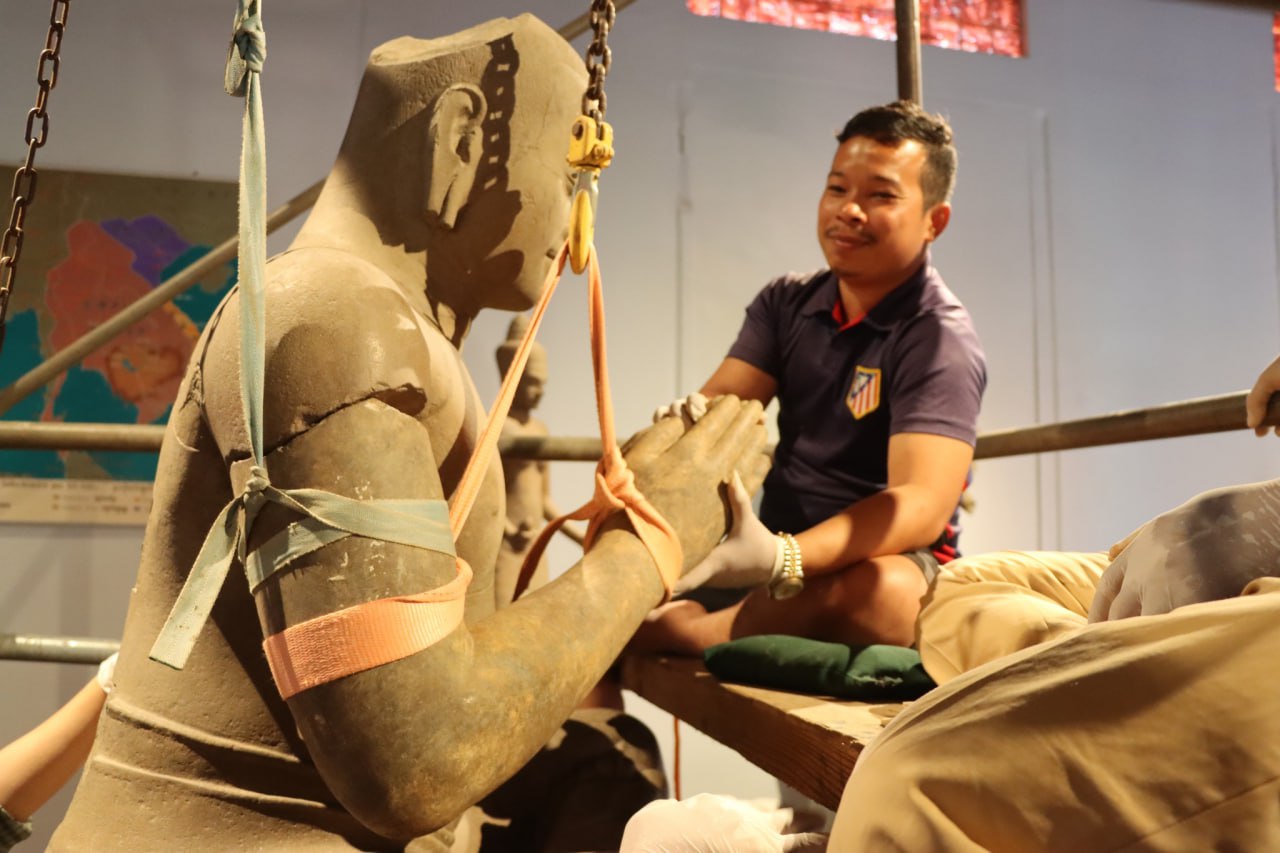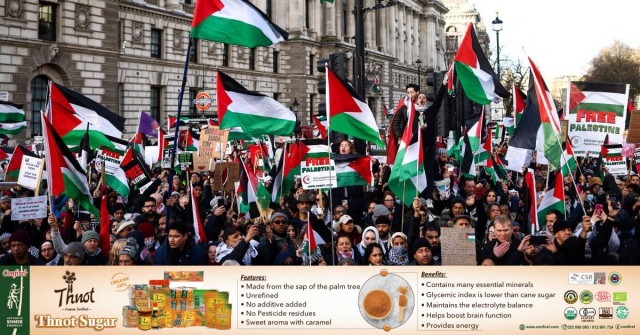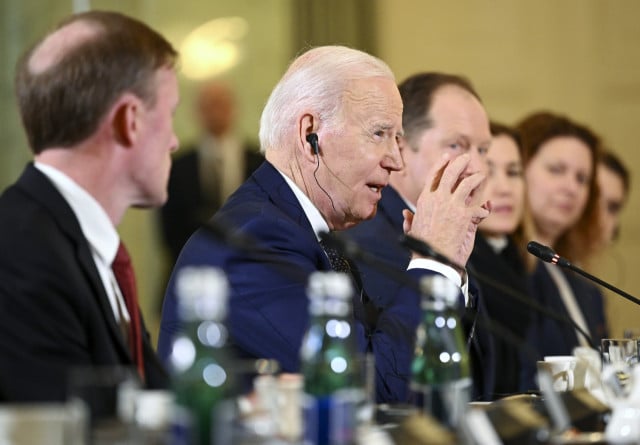A Statue of the Legendary King Jayavarman VII Is Being Pieced Together

- By Ung Chamroeun
- January 28, 2023 8:25 PM
PHNOM PENH – The National Museum of Cambodia on Jan. 28 announced that, following discoveries and research that began nearly 100 years ago and involved French and Cambodian experts, pieces of an arm and hand of the statue of the famed King Jayavarman VII were finally reassembled.
In a statement on its Facebook page, the museum recounted the saga that has led to putting together parts of this statue of the famed king who reigned at the height of the Khmer empire and built the city that is now the Angkor Archeological Park in Siem Reap province.
The story begins in 1924 when French researcher Henri Marchal found fragments of the statue, which were officially put in storage in 1931 at the Angkor Conservation facility in Siem Reap Province. Georges Groslier, who was curator of the National Museum in Phnom Penh, had the fragments brought to the museum in Phnom Penh and reassembled with the statue in late 1934.
It was not until 1998—more than 60 years later—that the conservation and restoration team of the National Museum observed that the reassembling had not been done correctly. So in late 1999, the restorers decided to disassemble the fragments according to technical restoration standards.
In the meantime, fragments of the statue’s right hand had been found in 1990 while, half a century earlier, fragments of the left forearm had been found in 1924. As the museum explained on Facebook, researcher Michel Tranet initially assumed that it was parts of the hands of Jayavarman VII, but he did not have the opportunity to test his hypothesis.
However, Tranet’s assumption was confirmed in 2019 by a French research team using 3D scanning technology to study the statue and pieces’ realignment. The scans showed that the two pieces of the arm actually belonged to the statue of Jayavarman VII and the broken joints were a nearly 100-percent fit.
Following the publication of the 3D-test results, the National Museum management decided in 2021 to have the pieces be reassembled with the statue.
In January 2023, the stone restoration workshop and conservation team went about connecting the pieces to check previous hypotheses and looked into techniques to best reassemble them with the statue, and then completed the task.

“The purpose of this preservation and restoration is to promote the prestige and invaluable accomplishment of the Angkorian kings who sacrificed their physical and mental strength to defend our country,” the National Museum said in its Facebook post.
According to APSARA Authority, the governing body that oversees the vast Angkor Archaeological Park, which is a UNESCO heritage site, King Jayavarman VII is believed to have reigned from 1181 to 1201. During his 30 years on the throne, he initiated a vast program of construction that included both public works and monuments.
Among the temples he built, the most famous is probably the Bayon temple around which he developed an entire city, Angkor Thom, as the capital of his empire. This walled city, which spread over nine square kilometers, today contains the famed temples of several Khmer kings.
Torn Chanritheara contributed to the story.















